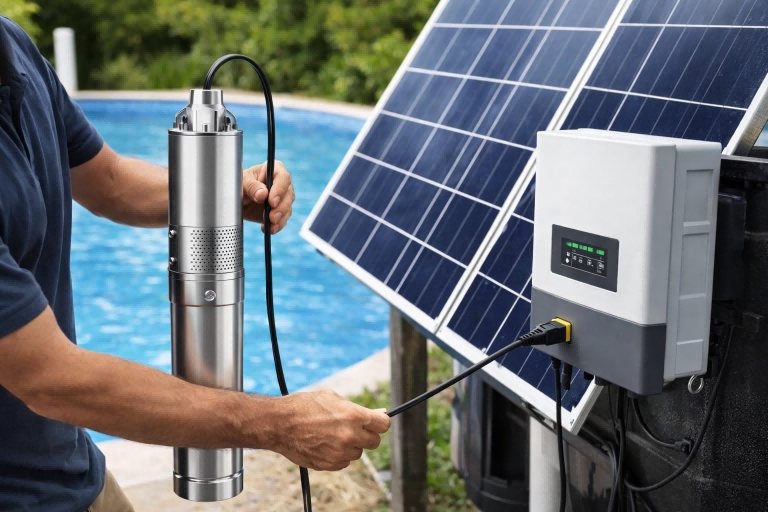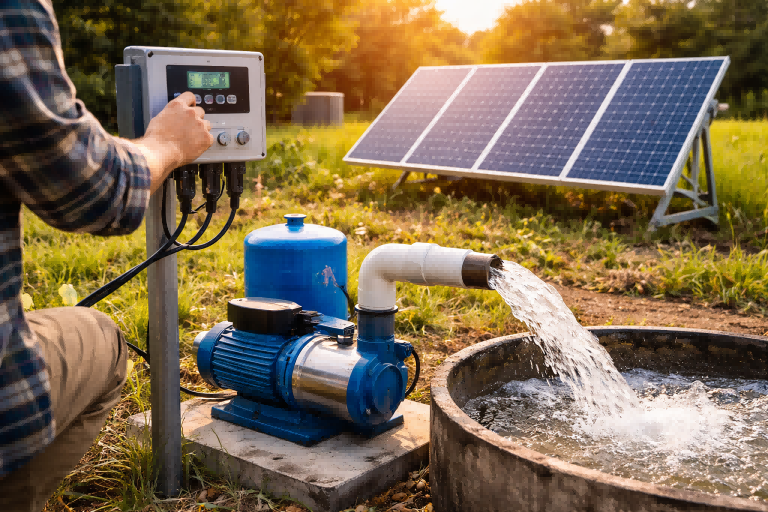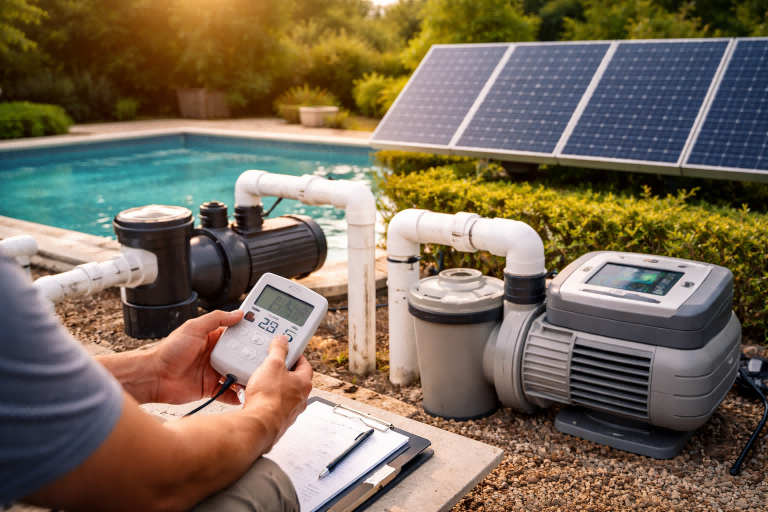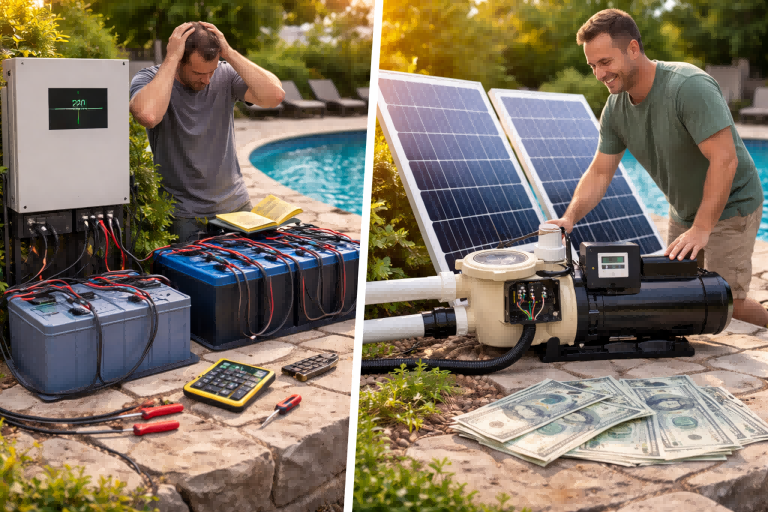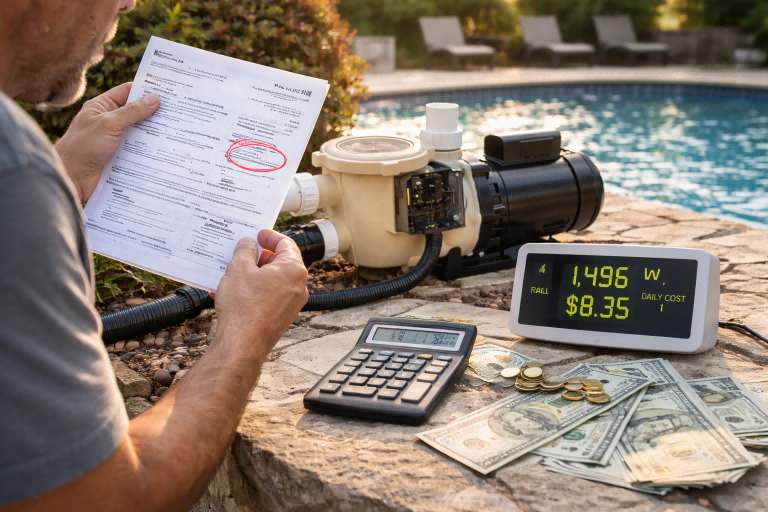Is your water pump exposed to the elements?
This leaves it vulnerable to damage, leading to unexpected failures and costly repairs.
A pump house protects your investment and ensures reliability.
A pump house is a dedicated shelter built to protect your water pump system. It shields the pump from harsh weather, prevents theft, and reduces noise. This simple structure significantly extends your pump's lifespan and guarantees a more reliable and efficient water supply for your property.
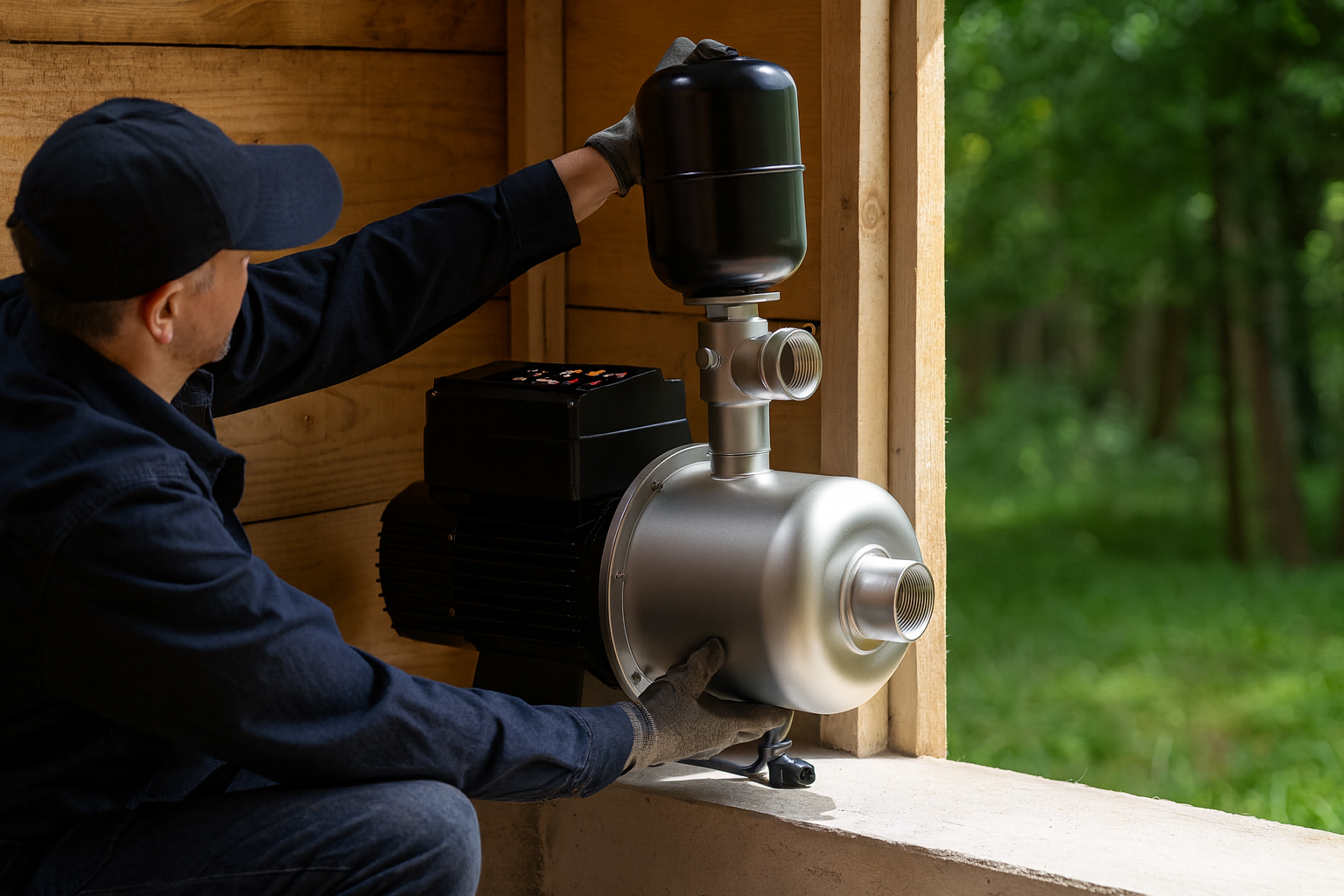
You have invested in a quality water pump.
It is the heart of your water supply system.
But is that investment properly protected?
Without a dedicated shelter, you are leaving its performance and longevity to chance.
A pump house is not just a box; it is an essential part of a durable and efficient water system.
It acts as a complete defense mechanism for your equipment.
Let’s explore the critical reasons why this structure is not a luxury, but a necessity for any property owner serious about their water supply.
Understanding these benefits will show you how a pump house saves you money, time, and stress in the long run.
Protection From the Elements
Rain, sun, and frost can destroy your expensive pump.
Are you worried about sudden failures and costly replacements?
A pump house offers the ultimate shield against harsh weather conditions.
A pump house shields your valuable equipment from rain that causes rust and electrical shorts. It also blocks harsh sunlight that degrades plastic components and seals. In colder climates, it prevents freezing, a common and catastrophic cause of pump failure and cracked pipes, ensuring year-round operation.
Weather is a relentless force.
It can severely degrade your water pump over time.
Each environmental factor poses a unique threat to the different components of your pump system.
Without protection, you are essentially shortening the life of your equipment and inviting expensive problems.
A pump house acts as a barrier, neutralizing these threats and creating a stable environment for your pump to operate efficiently.
Let's break down exactly how different weather conditions can harm your pump and how a well-designed pump house provides the perfect solution.
The Dangers of Direct Weather Exposure
Your water pump is a complex machine with sensitive parts.
Direct exposure to the environment creates multiple points of failure.
-
Rain and Moisture: Water is the primary enemy of metal and electronics. Constant exposure leads to rust and corrosion on the pump's casing, motor, and fasteners. More critically, moisture can seep into the electrical housing, causing short circuits, tripping breakers, and creating a serious electrical hazard.
-
Sunlight (UV Radiation): The sun's UV rays are incredibly damaging over time. They cause plastic components, like the control box or terminal covers, to become brittle and crack. Hoses and seals will degrade faster, leading to leaks. Even the protective paint on the motor fins will break down, accelerating corrosion.
-
Extreme Temperatures: In hot climates, direct sun can cause a pump's motor to overheat, leading to thermal shutdown or permanent damage to the motor windings. Conversely, in cold regions, freezing is a disaster. Water trapped in the pump casing or pipes can freeze, expand, and crack the housing or volute, resulting in a total loss.
-
Wind and Debris: Wind can blow dust, leaves, sand, and other debris into the pump's cooling fins. This can clog the motor and cause it to overheat. Fine dust can also work its way into bearings, causing premature wear and noisy operation.
How a Pump House Provides a Solution
A pump house is more than just a roof.
It is an engineered environment.
It is designed to counter the specific threats posed by the weather.
A solid, waterproof roof and walls are the first line of defense.
They keep rain and snow away from the pump and all its electrical connections.
Proper ventilation is also crucial.
Vents allow heat generated by the motor to escape, preventing overheating during long run cycles, especially in hot weather.
In colder regions, insulation is key.
Insulating the walls and ceiling of the pump house helps trap residual heat from the motor and can keep the internal temperature above freezing.
This small step can prevent catastrophic freeze damage.
Finally, the structure itself blocks wind and prevents debris from ever reaching the pump.
This keeps the motor clean, ensures proper cooling, and reduces wear on moving parts.
Comparing Protected vs. Exposed Pump Components
The difference in lifespan and reliability is dramatic.
A protected pump will consistently outperform and outlast an exposed one.
This table illustrates the expected impact on key components.
| Component | Lifespan in Pump House | Lifespan Exposed | Key Risk Factor |
|---|---|---|---|
| Motor Casing | 15-20 years | 5-8 years | Rust, Corrosion |
| Electrical Box | 20+ years | 3-7 years | Moisture Ingress, UV Damage |
| Seals & Gaskets | 5-10 years | 1-3 years | UV Degradation, Heat |
| Pressure Switch | 10-15 years | 2-5 years | Dust, Moisture, Corrosion |
| Overall System | 15+ years | 4-8 years | Combined Failures |
The data is clear.
A pump house is a small investment that doubles or even triples the functional life of your entire water pump system.
It moves your pump from being a consumable item to a long-term asset.
Enhanced Security and Safety
Your water pump is a valuable asset left unattended.
Are you concerned about theft or accidental damage from children or animals?
A lockable pump house secures your equipment completely.
A pump house provides essential security by keeping your valuable pump system under lock and key. This deters theft and prevents vandalism. It also creates a vital safety barrier, keeping children, pets, and wildlife away from dangerous electrical components and moving parts, preventing accidents and injuries.
Beyond the weather, there are other physical threats to your pump system.
These threats come from both humans and animals.
An exposed pump is an easy target for theft, especially if it is a high-value model.
It is also a significant hazard.
The combination of electricity and water, along with moving parts, poses a real risk to anyone who gets too close, especially curious children or pets.
A pump house addresses these security and safety issues directly and effectively.
It is not just about protecting the pump; it is about protecting your property and family.
Let’s examine these risks and see how a secure enclosure is the only responsible solution.
Preventing Theft and Vandalism
Water pumps, especially high-performance models like variable speed drive (VSD) pumps, are valuable.
They contain motors with copper windings and sophisticated electronics.
Leaving such an asset in the open is an invitation to thieves.
The cost of replacing a stolen pump is high.
It also includes the inconvenience of being without water until a new one is installed.
Vandalism is another real threat.
Even minor damage from a thrown rock or tampering can disable your system and lead to expensive repairs.
A sturdy, lockable pump house is the most effective deterrent.
It conceals the pump from view, removing the temptation.
A locked door makes it significantly harder for an opportunistic thief to access and remove the equipment.
Ensuring Safety for Family and Animals
Safety is perhaps the most important reason to enclose your pump.
Water pumps have several inherent dangers.
-
Electrical Hazards: Pumps, especially those running on 220V or higher, have live electrical terminals in their pressure switch and control box. An exposed wire or a faulty connection can be lethal if touched, especially in a wet environment.
-
Moving Parts: While many pumps have fan covers, some have exposed motor shafts or couplings. These rotating parts can easily snag loose clothing or injure a curious hand or paw.
-
Hot Surfaces: The pump motor can get very hot during operation. This poses a burn risk to anyone who might touch it, particularly young children.
A pump house creates a physical barrier.
It puts these hazards out of reach.
By keeping the door locked, you ensure that only authorized individuals can access the equipment.
This peace of mind is invaluable for any property owner with children or pets.
Comparing Safety Scenarios
The contrast between an open system and an enclosed one highlights the importance of a pump house.
| Safety Scenario | Exposed Pump System | Enclosed in Pump House |
|---|---|---|
| Child/Pet Access | High risk of contact with electrical or moving parts. | Access prevented by locked door. Risk is eliminated. |
| Accidental Damage | Vulnerable to being hit by lawn equipment, vehicles, etc. | Protected from impacts by solid walls. |
| Electrical Risk | High. Exposed to rain, puddles, and tampering. | Low. All components are kept dry and secure. |
| Liability | High. Owner may be liable for injuries on their property. | Low. Owner has taken reasonable steps to secure a hazard. |
Building a pump house is a proactive step.
It transforms your pump installation from a potential liability into a secure and safe part of your infrastructure.
You are not just protecting a machine; you are creating a safer environment for everyone on your property.
Noise Reduction and Aesthetics
Does the constant hum of your water pump disrupt your peace?
Its industrial look can also spoil your landscape design.
A pump house silences the noise and hides the machinery.
A pump house significantly reduces the operational noise from your water pump, creating a quieter and more peaceful environment for your home and garden. A well-designed shelter also hides the unsightly pump and plumbing, integrating seamlessly into your landscape and improving the overall aesthetic appeal of your property.
A water pump is a functional piece of equipment, not a decorative one.
Its presence can be disruptive in two major ways.
First, all pumps generate noise when they are running.
This noise can range from a low hum to a loud whir, which can be very annoying, especially if the pump is located near living areas, patios, or quiet garden spaces.
Second, the pump, along with its associated pipes, tanks, and wiring, is often visually unappealing.
It can look like an industrial mess in an otherwise beautiful landscape.
A pump house elegantly solves both of these problems at once.
It is a dual-purpose solution for improving both auditory and visual comfort.
How a Pump House Dampens Noise
Pump noise comes primarily from the motor and the vibration it creates.
This sound travels easily through the air.
A pump house acts as a sound-insulating barrier.
-
Containment: The solid walls of the pump house contain the sound waves, preventing them from propagating across your property.
-
Absorption: You can enhance this effect by adding sound-dampening materials inside. Lining the interior walls with acoustic foam or mineral wool insulation is a highly effective way to absorb sound energy and make the pump almost inaudible from the outside.
-
Vibration Isolation: A major source of noise is vibration transferred from the pump to the floor. Placing the pump on a dense rubber mat or installing it on a separate concrete pad that is not connected to your home's foundation can significantly reduce this structural vibration.
The difference can be dramatic.
A loud pump can be reduced to a barely perceptible hum, allowing you to enjoy your outdoor spaces in peace.
Improving Your Property's Visual Appeal
Functionality does not have to be ugly.
A pump, pressure tank, filters, and pipes create a cluttered and industrial look.
A pump house conceals all of this messy hardware.
This instantly cleans up the look of your property.
The pump house itself can be designed to be an attractive feature.
You can build it to match the architectural style of your home or other outbuildings.
Consider these design options:
- Siding: Use the same siding as your house, whether it's vinyl, wood, or brick veneer.
- Roofing: Match the roofing material and color to your home's roof.
- Paint: Paint the pump house to match or complement your home's color scheme.
- Landscaping: Plant shrubs or flowers around the pump house to help it blend naturally into your garden.
A thoughtfully designed pump house doesn't just hide the equipment; it enhances your landscape.
It can be made to look like a charming garden shed, a small workshop, or a miniature version of your main house.
This turns a purely functional necessity into an aesthetic asset.
Noise Level Comparison
The reduction in audible noise is measurable and significant.
Here's what you can expect.
| Pump Location | Typical Noise Level (Decibels) | Perceived Loudness |
|---|---|---|
| Exposed Pump (at 10 feet) | 65-75 dB | Like a vacuum cleaner or busy street |
| Inside Basic Wood Pump House | 50-60 dB | Like a normal conversation |
| Inside Insulated Pump House | 40-50 dB | Like a quiet library |
By enclosing your pump, you can lower its noise level by 15-25 decibels.
This is a huge reduction.
It makes the difference between a constant annoyance and a system you never even notice is running.
Simplified Maintenance and Diagnostics
Is working on your pump outdoors a struggle?
Kneeling in the mud or rain makes repairs difficult and unpleasant.
A pump house provides a clean, dry, and organized workspace.
A pump house creates an ideal environment for maintenance and repairs. It offers shelter from bad weather, allowing you to work comfortably. You can also add lighting for clear visibility and shelving to keep tools and spare parts organized and readily accessible, simplifying every task.
All mechanical systems require maintenance.
Your water pump is no exception.
Regular tasks might include cleaning filters, checking for leaks, or diagnosing pressure issues.
Attempting these jobs on an exposed pump is often a frustrating experience.
You might be battling rain, harsh sun, mud, or darkness.
This unpleasant environment can lead to skipped maintenance, which inevitably results in bigger, more expensive problems down the line.
A pump house transforms maintenance from a chore into a straightforward task.
It provides a dedicated, controlled environment that makes servicing your pump easier, safer, and more effective.
Creating an Ideal Workspace
A pump house is your personal pump service station.
It provides several key advantages that simplify maintenance.
-
Shelter: This is the most obvious benefit. You can work on your pump in any weather. You will stay dry during a rainstorm and shaded from the hot sun. This comfort allows you to take your time and do the job right.
-
Lighting: An exposed pump can be hard to inspect, especially in low light. You can easily install a simple light fixture inside your pump house. Good lighting is essential for spotting small leaks, reading pressure gauges, and safely working with electrical components.
-
Organization: A pump house provides space for organization. You can install shelves or hooks to store essential tools, spare parts like gaskets and pressure switches, and filter cartridges. Everything you need is in one place, saving you trips back and forth to your garage.
-
Cleanliness: Working on a pump in a clean, dry space is far better than kneeling in dirt or mud. A clean environment also prevents contaminants from getting into the system while you are working on it.
Facilitating Proactive Maintenance
Because a pump house makes the work so much easier, it encourages a proactive approach to maintenance.
When checking the pump is a simple, comfortable task, you are more likely to do it regularly.
A typical proactive maintenance schedule could look like this:
| Task | Frequency | Benefit of Pump House |
|---|---|---|
| Visual Inspection | Monthly | Easy to do with good lighting and shelter. |
| Clean Intake Filter | Quarterly | No need to lie in the dirt or mud. |
| Check Pressure Gauge | Monthly | Gauge is protected from weather and easy to read. |
| Test for Leaks | B-Annually | Dry floor makes spotting drips easy. |
| Check Electricals | Annually | Safe, dry environment for working with wiring. |
This regular attention helps you catch small problems before they become catastrophic failures.
A tiny drip caught early is a simple gasket replacement.
A tiny drip ignored can lead to a flooded pump house and a destroyed motor.
Streamlining Diagnostics
When something does go wrong, a pump house makes troubleshooting much easier.
Let's say your pump is cycling on and off too frequently.
Inside a pump house, you have a controlled environment to diagnose the issue.
Step 1: Listen. In the quiet enclosure, you can hear if the pressure switch is clicking erratically or if the motor is making an unusual noise.
Step 2: Look. With good lighting, you can easily inspect the pressure tank's air valve for leaks or check the pressure gauge for accuracy.
Step 3: Test. You have a clean, dry space to safely use a multimeter to check voltage or test the continuity of the pressure switch.
Trying to perform these diagnostic steps in the dark or rain is nearly impossible.
A pump house provides the professional conditions needed for accurate and safe troubleshooting, saving you time and potentially the cost of a service call.
Conclusion
A pump house is a crucial investment.
It protects your pump from weather, theft, and damage.
This ensures a long-lasting, reliable, and quiet water supply for your property.
FAQs
Why is my water pump getting hot?
Water pumps generate heat during normal operation.
However, overheating can be caused by low voltage, running dry, or clogged cooling fins.
A properly ventilated pump house helps dissipate this heat effectively.
How do I protect my water pump in the winter?
An insulated pump house is the best protection.
You can also use a heat lamp or insulated wrap inside the enclosure.
This prevents water from freezing inside the pump and causing it to crack.
Can I build my own pump house?
Yes, you can build a pump house using basic carpentry skills.
Ensure it is waterproof, well-ventilated, and large enough to access the pump for maintenance.
Many pre-fabricated kits are also available.
How big should a pump house be?
A pump house should be large enough to comfortably house the pump, pressure tank, and any filters.
You need at least one foot of clearance around all sides of the equipment for airflow and maintenance access.
Does a pump house increase home value?
Yes, a well-built and maintained pump house can increase property value.
It shows that the water system is well-protected and professionally managed.
This is an attractive feature for potential buyers.
What is the best material for a pump house?
Treated wood is common, affordable, and easy to work with.
For maximum durability, consider concrete blocks or a metal shed.
The key is to ensure the material is weather-resistant and the roof is waterproof.


